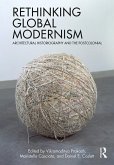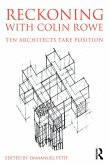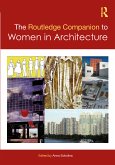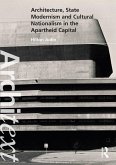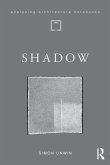Rethinking Global Modernism
Architectural Historiography and the Postcolonial
Herausgeber: Coslett, Daniel E.; Prakash, Vikramaditya; Casciato, Maristella
Rethinking Global Modernism
Architectural Historiography and the Postcolonial
Herausgeber: Coslett, Daniel E.; Prakash, Vikramaditya; Casciato, Maristella
- Gebundenes Buch
- Merkliste
- Auf die Merkliste
- Bewerten Bewerten
- Teilen
- Produkt teilen
- Produkterinnerung
- Produkterinnerung
This anthology collects developing scholarship on modernism that outlines a new decentred history of global modernism in architecture using postcolonial and other related theoretical frameworks.
Andere Kunden interessierten sich auch für
![Rethinking Global Modernism Rethinking Global Modernism]() Rethinking Global Modernism56,99 €
Rethinking Global Modernism56,99 €![Reckoning with Colin Rowe Reckoning with Colin Rowe]() Reckoning with Colin Rowe81,99 €
Reckoning with Colin Rowe81,99 €![Architecture is a Verb Architecture is a Verb]() Sarah Robinson (Denmark Aalborg University)Architecture is a Verb55,99 €
Sarah Robinson (Denmark Aalborg University)Architecture is a Verb55,99 €![The Routledge Companion to Women in Architecture The Routledge Companion to Women in Architecture]() The Routledge Companion to Women in Architecture64,99 €
The Routledge Companion to Women in Architecture64,99 €![Architecture, State Modernism and Cultural Nationalism in the Apartheid Capital Architecture, State Modernism and Cultural Nationalism in the Apartheid Capital]() Hilton Judin (South Africa University of Witwatersrand)Architecture, State Modernism and Cultural Nationalism in the Apartheid Capital58,99 €
Hilton Judin (South Africa University of Witwatersrand)Architecture, State Modernism and Cultural Nationalism in the Apartheid Capital58,99 €![Shadow Shadow]() Simon UnwinShadow38,99 €
Simon UnwinShadow38,99 €![Alvar Aalto and the Future of Architecture Alvar Aalto and the Future of Architecture]() Robert CodyAlvar Aalto and the Future of Architecture180,99 €
Robert CodyAlvar Aalto and the Future of Architecture180,99 €-
-
-
This anthology collects developing scholarship on modernism that outlines a new decentred history of global modernism in architecture using postcolonial and other related theoretical frameworks.
Hinweis: Dieser Artikel kann nur an eine deutsche Lieferadresse ausgeliefert werden.
Hinweis: Dieser Artikel kann nur an eine deutsche Lieferadresse ausgeliefert werden.
Produktdetails
- Produktdetails
- Verlag: Taylor & Francis Ltd
- Seitenzahl: 394
- Erscheinungstermin: 23. November 2021
- Englisch
- Abmessung: 256mm x 183mm x 26mm
- Gewicht: 892g
- ISBN-13: 9780367636708
- ISBN-10: 0367636700
- Artikelnr.: 62276618
- Herstellerkennzeichnung
- Libri GmbH
- Europaallee 1
- 36244 Bad Hersfeld
- gpsr@libri.de
- Verlag: Taylor & Francis Ltd
- Seitenzahl: 394
- Erscheinungstermin: 23. November 2021
- Englisch
- Abmessung: 256mm x 183mm x 26mm
- Gewicht: 892g
- ISBN-13: 9780367636708
- ISBN-10: 0367636700
- Artikelnr.: 62276618
- Herstellerkennzeichnung
- Libri GmbH
- Europaallee 1
- 36244 Bad Hersfeld
- gpsr@libri.de
Vikramaditya Prakash is an architect and an architectural historian and theorist. He is a professor of architecture and Associate Dean for Academic Affairs at the University of Washington, Seattle. Prakash is the host of the ArchitectureTalk podcast and codesign lead at the Office of Uncertainty Research. His recent books include Colonial Modernities: Building, Dwelling and Architecture in British India and Ceylon (edited with Peter Scriver) (Routledge, 2007), The Architecture of Shivdatt Sharma (Mapin, 2012), Chandigarh: An Architectural Guide (Altrim Publishers, 2015), and One Continuous Line: Art, Architecture and Urbanism of Aditya Prakash (Mapin, 2021). Maristella Casciato is an architect and architectural historian and is Senior Curator of Architectural Collections at the Getty Research Institute (since 2016). She was Mellon Senior Fellow at the Canadian Center for Architecture in Montreal (2010) prior to being appointed Associate Director of Research at the same institute (2012-15). She has taught the history of architecture in Italy and in the United States. Since the late 1990s, she has been engaged in a research project on Pierre Jeanneret and the planning of Chandigarh in postcolonial India. On this topic, she has curated a few exhibitions and contributed to the publication of catalogues and essays. Daniel E. Coslett is a scholar of colonial and postcolonial architecture and urbanism whose work addresses the intersections of architecture and urban planning, preservation, archaeology, and tourism in North Africa. He received a PhD in the history and theory of built environments from the University of Washington and an MA in the subject from Cornell University. Coslett has taught art and architectural history at Western Washington University and the University of Washington. His edited volume entitled Neocolonialism and Built Heritage: Echoes of Empire in Africa, Asia, and Europe (Routledge) was published in 2020. He is an associate editor at the International Journal of Islamic Architecture.
Introduction; 1. Global Modernism and the Postcolonial (Vikramaditya
Prakash, Maristella Casciato, and Daniel E. Coslett); PART I: Critiques of
Normative Modernist Narratives; 2. "Weak" Modernism: Managing the Threat of
Brazil's Modern Architecture at MoMA (Patricio del Real); 3. Enchanted
Transfers: MoMA's Japanese Exhibition House and the Secular Occlusion of
Modernism (María González Pendás); 4. Competing Modernities: Socialist
Architecture's Challenge to the Global (Juliana Maxim); 5. Architecture in
the 1990s, the Mies van der Rohe Prize, and the Creation of the
Civilization Industrial Complex (Mark Jarzombek); PART II: New Theoretical
Frameworks for Thinking Global Modernism 6. An Architecture Culture of
"Contact Zones": Prospects for an Alternative Historiography of Modernism (
Tom Avermaete and Cathelijne Nuijsink); 7. Intra-action: Barad's "Agential
Realism" and Modernism (Hannah Feniak); 8. Layered Networks: Beyond the
Local and the Global in Postcolonial Modernism (Alona Nitzan-Shiftan);
PART III: Modernism and (Trans)Nationalism 9. Uneven Modernities:
Rabindranth Tagore and the Bauhaus (Martin Beattie); 10. Unbuilt Iran:
Modernism's Counterproposal in Alvar Aalto's Museum of Modern Art in Shiraz
(Shima Mohajeri and Parsa Khalili); 11. Representing Landscape, Mediating
Wetness: Louis Kahn at Sher-e-Bangla Nagar (East Pakistan/Bangladesh) (
Labib Hossain); PART IV: Rethinking Agency in Modernism 12. Domestic Funk:
Favelados of the Global North (Greg Castillo); 13. CINVA to Siyabuswa: The
Unruly Path of Global Self-help Housing (Hannah le Roux); 14.
Subaltern-Diasporic Histories of Modernism: Working on Australia's "Snowy
Scheme" (Anoma Pieris); PART V: Infrastructures and Materials Cultures of
Global Modernism); 15. The Politics of Concrete: Material Culture, Global
Modernism, and the Project of Decolonization in India (Martino Stierli);
16. Jane Drew in Lagos: Carbonization and Colonization at BP House, 1960 (
Daniel A. Barber); 17. Provincializing ENI's Disegno Africano: Agip
Tanzania and the Agip Motel in Dar es Salaam (Giulia Scotto); 18. The
Politics of Circulation: Cinema Architecture in Colonial Morocco (Craig
Buckley); Afterword; 19. Massive Urbanization and the Circulation of
Eventualities (AbdouMaliq Simone); Index
Prakash, Maristella Casciato, and Daniel E. Coslett); PART I: Critiques of
Normative Modernist Narratives; 2. "Weak" Modernism: Managing the Threat of
Brazil's Modern Architecture at MoMA (Patricio del Real); 3. Enchanted
Transfers: MoMA's Japanese Exhibition House and the Secular Occlusion of
Modernism (María González Pendás); 4. Competing Modernities: Socialist
Architecture's Challenge to the Global (Juliana Maxim); 5. Architecture in
the 1990s, the Mies van der Rohe Prize, and the Creation of the
Civilization Industrial Complex (Mark Jarzombek); PART II: New Theoretical
Frameworks for Thinking Global Modernism 6. An Architecture Culture of
"Contact Zones": Prospects for an Alternative Historiography of Modernism (
Tom Avermaete and Cathelijne Nuijsink); 7. Intra-action: Barad's "Agential
Realism" and Modernism (Hannah Feniak); 8. Layered Networks: Beyond the
Local and the Global in Postcolonial Modernism (Alona Nitzan-Shiftan);
PART III: Modernism and (Trans)Nationalism 9. Uneven Modernities:
Rabindranth Tagore and the Bauhaus (Martin Beattie); 10. Unbuilt Iran:
Modernism's Counterproposal in Alvar Aalto's Museum of Modern Art in Shiraz
(Shima Mohajeri and Parsa Khalili); 11. Representing Landscape, Mediating
Wetness: Louis Kahn at Sher-e-Bangla Nagar (East Pakistan/Bangladesh) (
Labib Hossain); PART IV: Rethinking Agency in Modernism 12. Domestic Funk:
Favelados of the Global North (Greg Castillo); 13. CINVA to Siyabuswa: The
Unruly Path of Global Self-help Housing (Hannah le Roux); 14.
Subaltern-Diasporic Histories of Modernism: Working on Australia's "Snowy
Scheme" (Anoma Pieris); PART V: Infrastructures and Materials Cultures of
Global Modernism); 15. The Politics of Concrete: Material Culture, Global
Modernism, and the Project of Decolonization in India (Martino Stierli);
16. Jane Drew in Lagos: Carbonization and Colonization at BP House, 1960 (
Daniel A. Barber); 17. Provincializing ENI's Disegno Africano: Agip
Tanzania and the Agip Motel in Dar es Salaam (Giulia Scotto); 18. The
Politics of Circulation: Cinema Architecture in Colonial Morocco (Craig
Buckley); Afterword; 19. Massive Urbanization and the Circulation of
Eventualities (AbdouMaliq Simone); Index
Introduction; 1. Global Modernism and the Postcolonial (Vikramaditya
Prakash, Maristella Casciato, and Daniel E. Coslett); PART I: Critiques of
Normative Modernist Narratives; 2. "Weak" Modernism: Managing the Threat of
Brazil's Modern Architecture at MoMA (Patricio del Real); 3. Enchanted
Transfers: MoMA's Japanese Exhibition House and the Secular Occlusion of
Modernism (María González Pendás); 4. Competing Modernities: Socialist
Architecture's Challenge to the Global (Juliana Maxim); 5. Architecture in
the 1990s, the Mies van der Rohe Prize, and the Creation of the
Civilization Industrial Complex (Mark Jarzombek); PART II: New Theoretical
Frameworks for Thinking Global Modernism 6. An Architecture Culture of
"Contact Zones": Prospects for an Alternative Historiography of Modernism (
Tom Avermaete and Cathelijne Nuijsink); 7. Intra-action: Barad's "Agential
Realism" and Modernism (Hannah Feniak); 8. Layered Networks: Beyond the
Local and the Global in Postcolonial Modernism (Alona Nitzan-Shiftan);
PART III: Modernism and (Trans)Nationalism 9. Uneven Modernities:
Rabindranth Tagore and the Bauhaus (Martin Beattie); 10. Unbuilt Iran:
Modernism's Counterproposal in Alvar Aalto's Museum of Modern Art in Shiraz
(Shima Mohajeri and Parsa Khalili); 11. Representing Landscape, Mediating
Wetness: Louis Kahn at Sher-e-Bangla Nagar (East Pakistan/Bangladesh) (
Labib Hossain); PART IV: Rethinking Agency in Modernism 12. Domestic Funk:
Favelados of the Global North (Greg Castillo); 13. CINVA to Siyabuswa: The
Unruly Path of Global Self-help Housing (Hannah le Roux); 14.
Subaltern-Diasporic Histories of Modernism: Working on Australia's "Snowy
Scheme" (Anoma Pieris); PART V: Infrastructures and Materials Cultures of
Global Modernism); 15. The Politics of Concrete: Material Culture, Global
Modernism, and the Project of Decolonization in India (Martino Stierli);
16. Jane Drew in Lagos: Carbonization and Colonization at BP House, 1960 (
Daniel A. Barber); 17. Provincializing ENI's Disegno Africano: Agip
Tanzania and the Agip Motel in Dar es Salaam (Giulia Scotto); 18. The
Politics of Circulation: Cinema Architecture in Colonial Morocco (Craig
Buckley); Afterword; 19. Massive Urbanization and the Circulation of
Eventualities (AbdouMaliq Simone); Index
Prakash, Maristella Casciato, and Daniel E. Coslett); PART I: Critiques of
Normative Modernist Narratives; 2. "Weak" Modernism: Managing the Threat of
Brazil's Modern Architecture at MoMA (Patricio del Real); 3. Enchanted
Transfers: MoMA's Japanese Exhibition House and the Secular Occlusion of
Modernism (María González Pendás); 4. Competing Modernities: Socialist
Architecture's Challenge to the Global (Juliana Maxim); 5. Architecture in
the 1990s, the Mies van der Rohe Prize, and the Creation of the
Civilization Industrial Complex (Mark Jarzombek); PART II: New Theoretical
Frameworks for Thinking Global Modernism 6. An Architecture Culture of
"Contact Zones": Prospects for an Alternative Historiography of Modernism (
Tom Avermaete and Cathelijne Nuijsink); 7. Intra-action: Barad's "Agential
Realism" and Modernism (Hannah Feniak); 8. Layered Networks: Beyond the
Local and the Global in Postcolonial Modernism (Alona Nitzan-Shiftan);
PART III: Modernism and (Trans)Nationalism 9. Uneven Modernities:
Rabindranth Tagore and the Bauhaus (Martin Beattie); 10. Unbuilt Iran:
Modernism's Counterproposal in Alvar Aalto's Museum of Modern Art in Shiraz
(Shima Mohajeri and Parsa Khalili); 11. Representing Landscape, Mediating
Wetness: Louis Kahn at Sher-e-Bangla Nagar (East Pakistan/Bangladesh) (
Labib Hossain); PART IV: Rethinking Agency in Modernism 12. Domestic Funk:
Favelados of the Global North (Greg Castillo); 13. CINVA to Siyabuswa: The
Unruly Path of Global Self-help Housing (Hannah le Roux); 14.
Subaltern-Diasporic Histories of Modernism: Working on Australia's "Snowy
Scheme" (Anoma Pieris); PART V: Infrastructures and Materials Cultures of
Global Modernism); 15. The Politics of Concrete: Material Culture, Global
Modernism, and the Project of Decolonization in India (Martino Stierli);
16. Jane Drew in Lagos: Carbonization and Colonization at BP House, 1960 (
Daniel A. Barber); 17. Provincializing ENI's Disegno Africano: Agip
Tanzania and the Agip Motel in Dar es Salaam (Giulia Scotto); 18. The
Politics of Circulation: Cinema Architecture in Colonial Morocco (Craig
Buckley); Afterword; 19. Massive Urbanization and the Circulation of
Eventualities (AbdouMaliq Simone); Index


